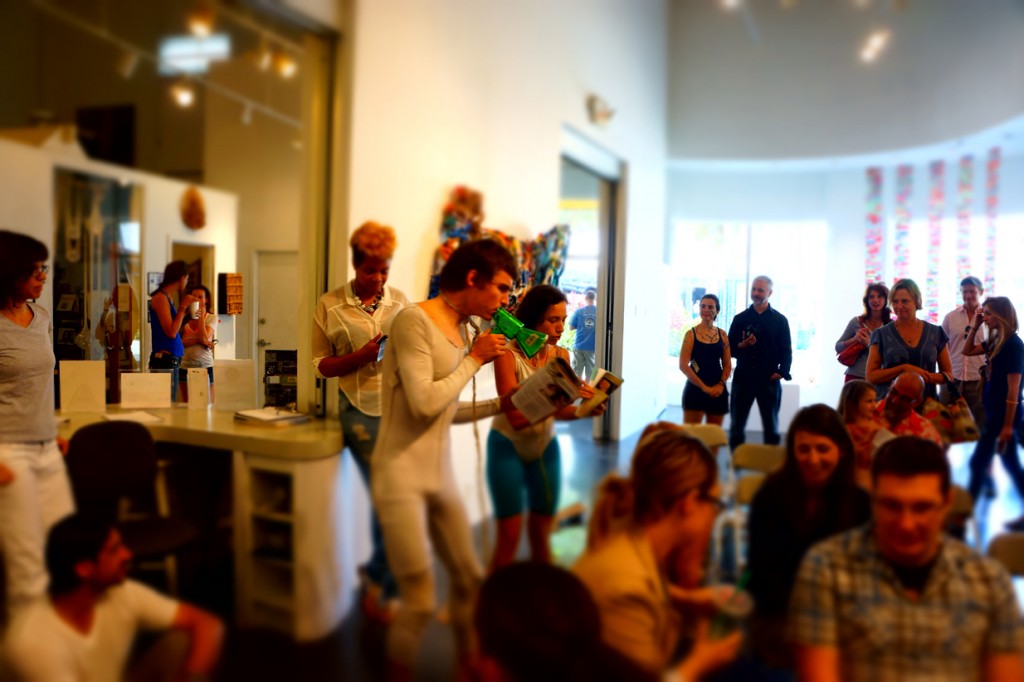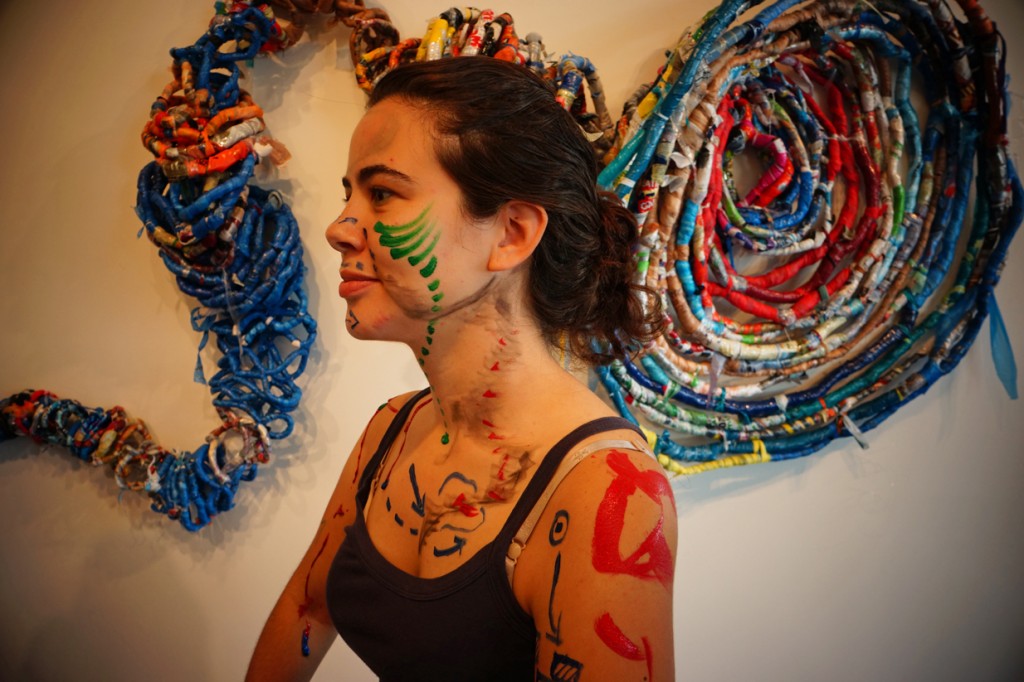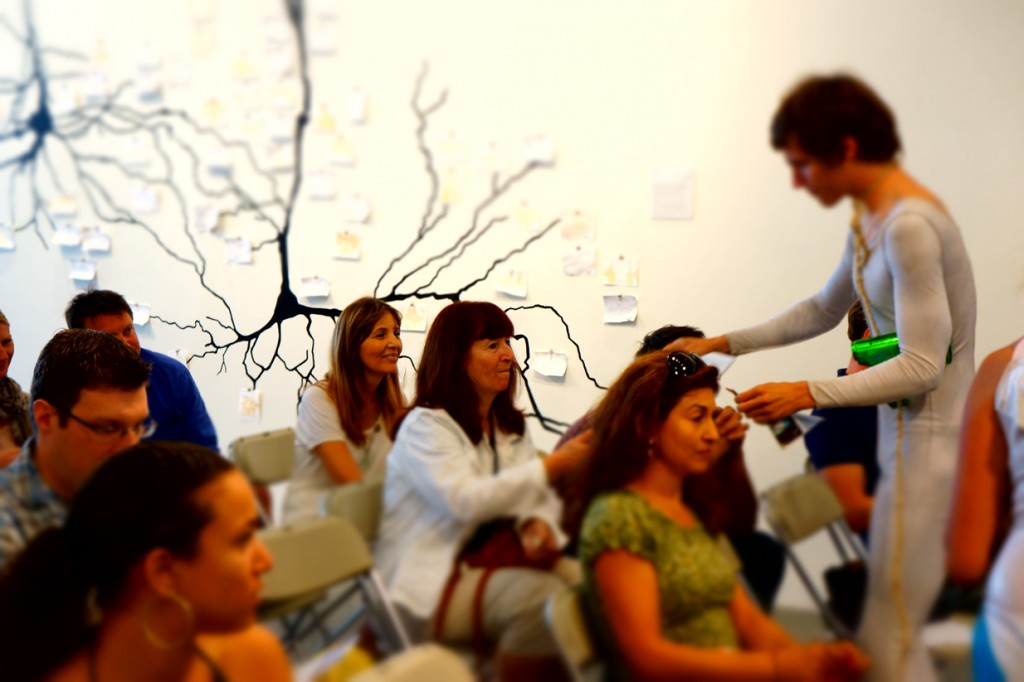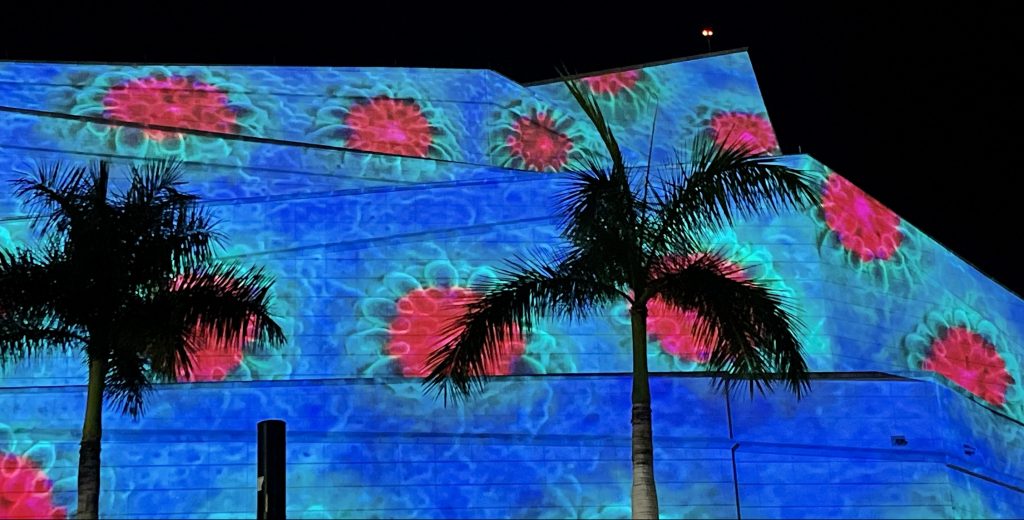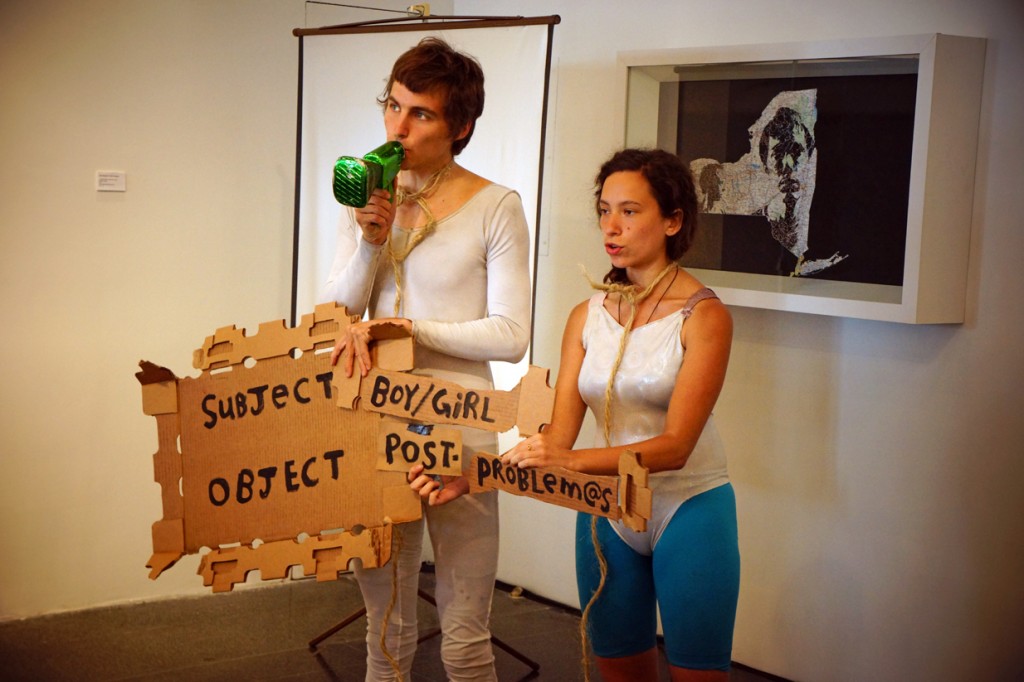
Mapping: Time + Space + A Rubber Chicken
Art cannot be tamed. It should be as wild and as free-range as possible. That’s what we got Sunday (April Fools’ Day) at “Mapping: Time + Space” at Art/Center South Florida (a Knight Arts grantee) — an exhibition that loosely interprets and represents the relationships between objects on a physical, psychological or liminal map.
The exhibition, which featured artists Rosa Naday Garmendia, Lucinda Linderman, Regina Jestrow, Carrie Sieh and collaborative team Jake Margolin & Nick Vaughan, closed with a topographical poetry reading, in honor of National Poetry Month, with Paula Kolek, Maureen Seaton and myself. It also featured a spontaneous, unscheduled performance by two traveling New York-ish based (they were non-committal on where they come from) artists Kalan and Este, who wheeled in their set (cardboard, a rubber chicken, bullhorn, twine, a mini suitcase and other goodies) on a wheelbarrow.
First up, the poets. They read individual work followed by several collaborative works all based on the concept of the exhibition. For example, the three poets read a collaborative piece written while looking at the famous Rorschach inkblots. Although the poems were based on the same image, each poem mapped the different ways in which our individual psyche’s perceive the same image. No psychologist was present during the performance.
Kolek closed the poetry reading when she stripped down to her skivvies — a pair of black shorts and a black tank top. She invited the audience to map her body with art supplies — markers, paint, tape, crayon, charcoal — while her husband, Michael Kolek, Seaton and I simultaneously read three prose poems written by Kolek.
When Kolek wrapped up, Kalan stood up and asked if he and Este could perform. “Sure,” everyone more or less shrugged. “Naked?” he asked. “Sure,” I shrugged. But, alas, due to decency laws, the troupe performed in proper attire. The two artists, who are en route to an artist residency in La Plata, Argentina, set the stage and asked the audience to participate.
They duo distributed balloons and asked the audience to create a soundtrack by releasing air from balloons. Kalan spoke through a bullhorn that reprocessed his voice, which sounded like a munchkin alien. The two artists crawled and dragged each other around the space and collected items from the audience — purses, drinks, bags — and piled them on stage. At one point, Kalan and Este tore out pages from a Spanish text and asked the audience to read while they entangled their bodies around the space.
It was a surrealist cabaret/human puppet show that, in many ways, reminded me of what Rorschach’s inkblots would look like if they were brought to life — colorful and scary beautiful. In the end, a new language emerged and marked us when we allowed the time and space for new voices to speak.
Recent Content
-
Artsarticle ·
-
Artsarticle ·
-
Artsarticle ·
